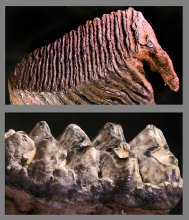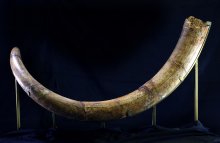Frozen Illinois (2.6 million to 11,700 years ago)
From 2.6 million to 12,000 years ago, massive sheets of ice advanced across North America many times. This period is known as the Pleistocene. Glaciers originating in eastern and central Canada extended into parts of Illinois during long cold periods. They melted back during shorter interglacial phases with a warmer climate. The Earth was about 4.6 billion years old. Geologically speaking, the Pleistocene was just a moment ago, and the continents were located in the positions they’re in today.
When it comes to Mammoths and Mastodons, the difference is more than a matter of pronunciation. They are very different prehistoric animals with distinct evolutionary and natural histories. While Mammoths are close relatives of modern elephants, Mastodons are only distantly related to the others. Mammoths and Mastodons inhabited separate habitats during the Pleistocene Era (2.6 million to 12,000 years ago). They are often confused, and their scientific names don’t help matters much. The American Mastodon is Mammut americanum, while the Wooly Mammoth is known as Mammuthus primigenius.
Discovered by an excavation crew in 1926 on the bank of the Ohio River near Golconda in Pope County, this Wooly Mammoth (Mammuthus primigenius) specimen didn’t come quietly. Illinois State Museum Director Aljah R. Crook worked with the crew on scene to recover as much of the Mammoth skeleton as possible.







